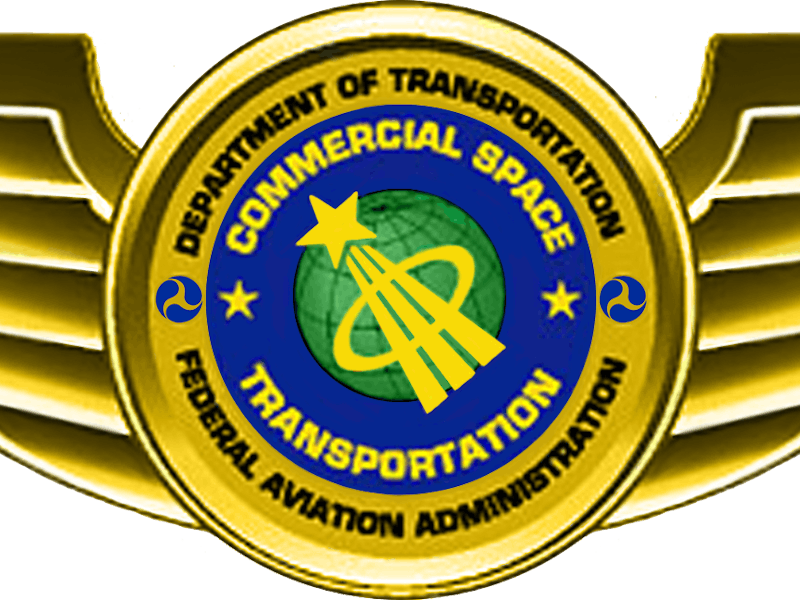Why Inspiration4’s participants aren’t actual astronauts
FAA: Call them pioneers, just don’t call them crew.

What’s in a name? Quite a lot as it turns out, especially when it comes to being an astronaut.
The crew members of Inspiration4, SpaceX’s four-person mission of all-civilian passengers that launched into low-Earth orbit on Wednesday night, may seem like “astronauts” to the fellow on the street. After all, Merriam-Webster defines “astronaut” as “a person who travels beyond the earth's atmosphere,” which would cover the team.
But the U.S. Federal Aviation Administration, which awards Commercial Space Astronaut Wings, has a much stricter definition for its awards.
As the new space race gets underway, it’s a question that could continue to come to the forefront. During the Sixties-era space race, flights were limited and reserved for elite candidates who had “the right stuff.” But companies like SpaceX, Virgin Galactic, and Blue Origin now want to bring more people along for the ride — some of which won’t need to handle any of the spacecraft’s operations.
With this expansion, the question emerges of who qualifies for the FAA’s astronaut wings.
Want to find out more about SpaceX’s plans and Inspiration4? Subscribe to MUSK READS+ for exclusive interviews and analysis about spaceflight, electric cars, and more.
Inspiration4’s Crew Dragon capsule ready for liftoff.
Astronaut wings: will Inspiration4 receive them?
In response to an Inverse query about whether the team will count as astronauts, the FAA responded that “SpaceX has designated all four individuals traveling on Inspiration4 as spaceflight participants, not crew.”
It may sound like they’re the same thing, but the FAA has a clear definition of who is part of the crew:
“any employee or independent contractor of a licensee, transferee, or permittee, or of a contractor or subcontractor of a licensee, transferee, or permittee, who performs activities in the course of that employment or contract directly relating to the launch, reentry, or other operation of or in a launch vehicle or reentry vehicle that carries human beings. A crew consists of flight crew and any remote operator.”
A spaceflight participant, on the other hand, is (bolded for emphasis):
“an individual, who is not crew, carried aboard a launch vehicle or reentry vehicle.”
SpaceX has classified the four passengers under the latter definition. To understand why that’s important, we’ll need to take a look at the most recent eligibility requirements to receive astronaut wings (bolded for emphasis):
“To be eligible for FAA Commercial Space Astronaut Wings, commercial launch crewmembers must meet the following criteria: a. Meet the requirements for flight crew qualifications and training under Title 14 of the Code of Federal Regulations (14 CFR) part 460. b. Demonstrated flight beyond 50 statute miles above the surface of the Earth as flight crew on an FAA/AST licensed or permitted launch or reentry vehicle. c. Demonstrated activities during flight that were essential to public safety, or contributed to human space flight safety.”
Because the passengers are all spaceflight participants, they will not qualify under this criteria.
The administration also offers honorary awards of Commercial Space Astronaut Wings, granted to “individuals whose contribution to commercial human space flight merits special recognition.”
The Associate Administrator for Commercial Space Transportation has complete discretion to award these to “individuals who demonstrated extraordinary contribution or beneficial service to the commercial human space flight industry.”
D.C.- Lt. Col. John Glenn received the Navy's "astronaut's wings" (on his left breast pocket flap) and the Marine Corps' "astronaut's insignia" (on his right chest) in March 1962.
Astronaut wings: why does it matter?
Margaret Weitekamp, curator and department chair of the Smithsonian National Air and Space Museum’s space history department, explained to Inverse in July 2021 that astronaut wings mattered a lot to U.S. Air Force pilots. Those that flew high enough to receive that distinction could use it to boost their career.
“Astronaut wings in military services make a difference in one service record, and that then adds to a resume that would make one eligible for new flight assignments, promotions, the progress of one’s career, that distinction comes with you,” she said then. “On the civilian side at NASA, the awarding of astronaut wings was nice but not necessary.”
In 2004, the FAA awarded the first Commercial Space Astronaut Wings to a private pilot, Mike Melvill. He piloted Virgin Galactic’s SpaceShipOne higher than 62 miles, the internationally-recognized boundary of space and well past the FAA’s 50-mile boundary.
Blue Origin’s all-civilian team lined up.
But the FAA brought in its most recent criteria on July 22, 2021, the same day Blue Origin hosted its first all-civilian mission to suborbital space. The new definition meant the four-person crew did not qualify for wings, as it now stated that members must demonstrate “activities during flight that were essential to public safety, or contributed to human space flight safety.”
But as Weitekamp said, the wings are ultimately “nice but not necessary.” Inspiration4 will still have spent three days in Earth’s orbit, and an award or lack thereof won’t change that fact.
SUBSCRIBE TO MUSK READS+, A PREMIUM NEWSLETTER THAT COVERS THE WORLDS OF ELON MUSK, SPACEX, TESLA, AND EVERYTHING BETWEEN.
This article was originally published on